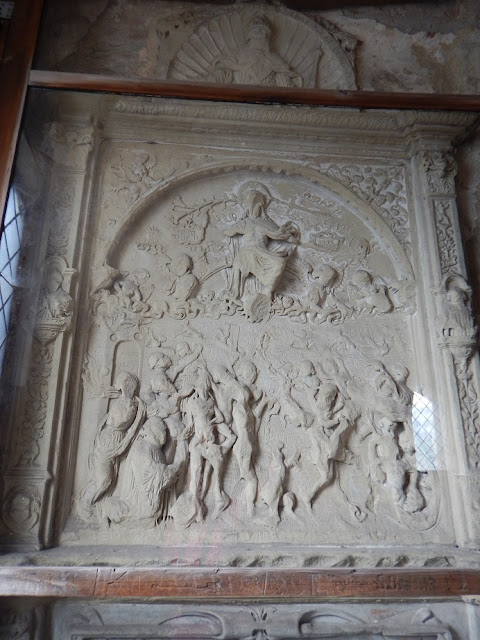The Roman monuments of Trier have been inscribed by UNESCO on the World Heritage List. The most famous is probably the Porta Nigra or Black Gate.
Porta Nigra used to be one of four gates in the city walls. Its name is of course due to the black shade that the sandstone took over the ages. It comes from the Middle Ages, the original Roman name is not known. But to me this one fits more than well.
Porta Nigra is the largest Roman city gate North of the Alps. It was constructed, together with the city walls, to protect the city from the Germanic tribes, one of which was called Treverans. I can only imagine how impressed where the nomadic warriors when they first saw the Porta Nigra and Trier.
You probably ask yourself how Porta Nigra managed to survive the last two thousand years, while most of other Roman buildings were destroyed by locals looking for stones to build their houses. Well, the answer is more than surprising - it was recycled! In the Middle Ages, the Porta Nigra was turned into a double-level church and remained one for several centuries, until Napoleon ordered that it to be restored to its original shape. I know it is hard to imagine, but according to old paintings, this is more or less what it looked like.
 |
| http://www.welterbe-trier.de |
When you enter the first floor, you can easily see the religious reliefs made in the old Roman walls.
The space in the middle, between the two corridors, was covered with a floor and thus constituted the main nave of the lower church.
If you come to Trier you just must visit it with the audio-guide - unlike in most places it not only talks to the visitors (in two versions - for children and for adults) but it also shows some visualisations of the past shape of the place.
The apse in the back included of course the altar. You can see on the walls and the ceiling the remainings of religious frescoes.
On the side wall comes an amazing relief.
Let's move to the second floor. If you perch (a bit!) through the window you can see the courtyard below. Probably in Roman times this is where the soldiers were gathering during their watching shifts.
The first and the second floor where again separated by a ceiling and a roof covered the top of the second floor, forming this the second level of the church accessible only to the privileged ones.
The apse seems even bigger here.
Looking at Porta Nigra in its new-old shape it is almost hard to believe that for seven centuries the Roman town gate was disguised into a church.
But Porta Nigra is not the only place to be seen in Trier. Just look at the city - we need to visit at least the market place and the cathedral.
The Market Square is surrounded by nice residential buildings. You will sure notice in the back the church of Saint George ...
... and the fountain in the middle.
The building on the left hand side is called Steipe and it used to be a party hall for the local authorities.
Finally, we arrive to the Roman cathedral of Trier. No my friends, I did not mean to say the Romanesque cathedral of Trier. This cathedral was really built by the Romans, since Trier was the seat of a christian bishops starting in 273 AD. The bishops of Trier were really powerful gentlemen, serving during Middle Ages and modern times as electors of the Holy Roman Empire.
I am sure you will not be surprised to find this sign here. Trier as a city of major importance for the Christianity is of course on one of the paths leading to Santiago de Compostela.
Inside, the cathedral is really impressive. Its biggest treasure is the Seamless Robe of Jesus, the one in which he is supposed to have gone through the Way of the Cross. It is however not possible to take pictures of the Robe.
I always wonder how they managed to put all these decorations on the ceiling, in a period when they did not have cranes or forklifts.
One amazing thing about the Trier cathedral is that it has another church literally glued to it. It is linked by a small corridor and seems to be almost a unique case of conjoined twins in architecture.
 |
| Source: Wikimedia |
Contrary to the cathedral which is rectangular, the church of Virgin Mary is basically round-shaped.
I hope that you have enjoyed this walk through time and space, in a city where recycling took a completely new meaning for me.






















No comments:
Post a Comment